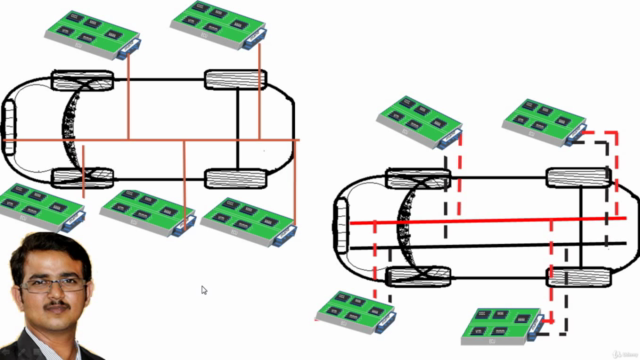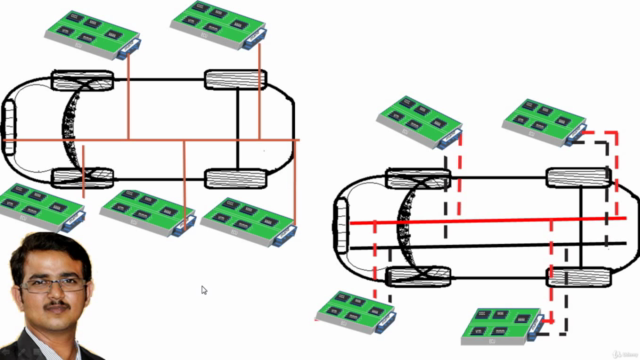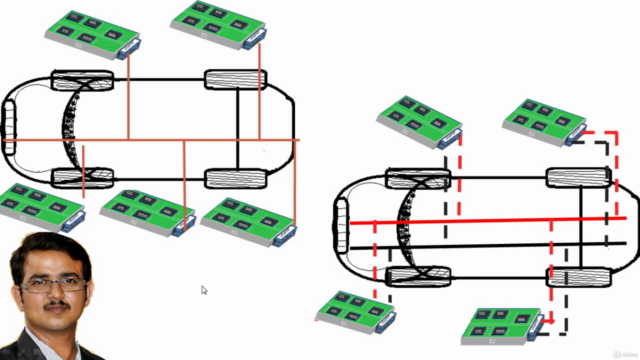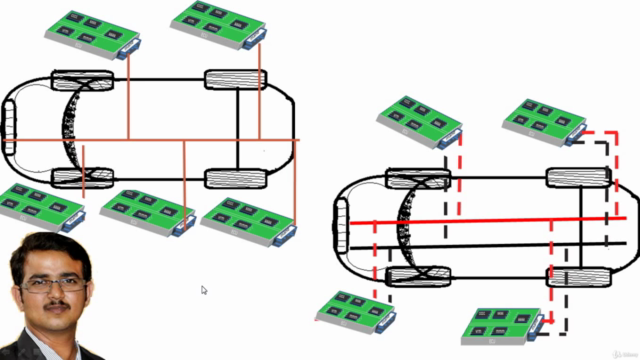CAN & LIN communication protocols and AUTOSAR

Why take this course?
🚗 Automotive Communication Protocols: CAN & LIN 🚀
Course Headline:
Master the Essentials of Controller Area Network (CAN) and Local Interconnect Network (LIN) in Automotive Communication!
Course Description:
Dive into the world of automotive communication with our comprehensive course on CAN & LIN. These two protocols are fundamental to modern vehicles' network communication, enabling efficient data exchange between various electronic control units (ECUs). This course will provide you with an in-depth understanding of both CAN and LIN, their applications, and the intricacies of their operation.
Controller Area Network (CAN) & LIN Protocols Overview:
- Introduction to CAN and LIN protocols
- Reasons for the development of CAN and LIN
- Comparison of CAN with other serial communication protocols
- CAN vehicle network Architecture and Features
- Detailed examination of CAN frame formats
CAN Data Frames & Communication Process:
- Understanding DATA, Remote, Error, and Overload frames of CAN
- The arbitration process in CAN to resolve BUS conflicts 🤖
- NRZ (Non-Return to Zero) format specifics and its role in CAN communication
- Bit-stuffing technique to overcome issues caused by NRZ format
- Comprehensive error handling and detection, including different types of errors such as Bit-stuff error, CRC (Cyclic Redundancy Check) error, ACK (Acknowledge) error, and fixed-form error
Differential Voltage & Node Interfacing:
- Differential voltage concept in CAN for reliable data transmission
- Exploring the CAN node interfacing levels
- Analyzing CAN transceivers
CAN Physical Layer Details:
- Insight into CAN nodes, bit timings, and baud rate settings
- Understanding CAN Bus voltage levels and node interfacing techniques for optimal network performance
CAN Data Link Layer Insights:
- Mastering the CAN Bus arbitration process
- Learning about CAN Bus Fault Confinement for a robust communication system
LIN Protocol Exploration:
- Comparison between CAN and LIN
- Frame formats of LIN and their role in intra-vehicle networks
- Features and limitations of LIN protocol
- In-depth look at the LIN physical layer, including LIN nodes and voltage levels
Additional Topics (Coming Soon):
- PID (Prototype Identification) Calculation for CAN and LIN
- Checksum Calculation methodologies
- Advanced topics on error detection, handling (to be added soon)
- Comparison of CAN with FlexRay communication protocols
- Overview of the FlexRay protocol features
Why Take This Course?
By completing this course, you will gain a solid foundation in automotive communication protocols. Whether you are an engineer, designer, or student interested in automotive systems, this course will equip you with the knowledge and skills to:
- Understand and apply CAN and LIN protocols in real-world applications
- Troubleshoot and optimize network communication issues
- Design efficient vehicle communication networks
- Stay ahead of the curve in the fast-evolving automotive industry
🎓 Join us on this journey to master the language of modern vehicles with CAN and LIN protocols! 🚘✨
Course Gallery




Loading charts...